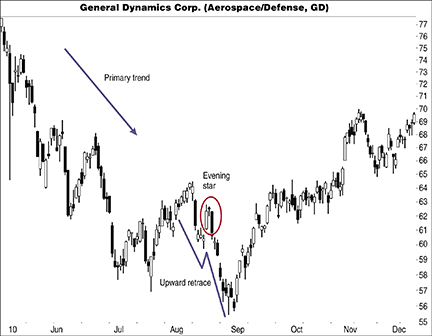CHARTING
When Candles Work Best
What You Don’t Know About Candlesticks
Researching candlesticks yields some surprises.
In writing my latest book, Encyclopedia Of Candlestick Charts, I made some startling discoveries. I used more than 4.7 million candle lines (price bars) for the research with data going back as far as the 1980s in hundreds of stocks, but not all stocks covered the entire period.
Reversals win
One famous technical analyst wrote that continuations perform better than reversals. That would make sense, since it is easier for price to swim with the tide than against it. There is just one problem: That’s wrong. I tested this on thousands of chart patterns and candlesticks with similar results for each. Reversal candlestick patterns outperform continuations 59% to 41% of the time.
One explanation is that the price trend in a candlestick continuation is tired and doesn’t move far. After a reversal, however, traders are excited and power the stock in the new direction, leading to an extended move. Those caught on the wrong side of the trade exit their positions and then jump on the new trend, powering it even more.
I don’t know if that explanation is correct, but I do know that reversals beat continuations.
Trade with the trend
If you’re a serious candlestick player, then you’ll want to know when candles work best. Since we know that reversals work better than continuations, make sure that the breakout direction agrees with the primary trend.

Figure 1: trade with the trend. An evening star appears as a retrace of the downward trend. A downward breakout joins the primary downtrend.